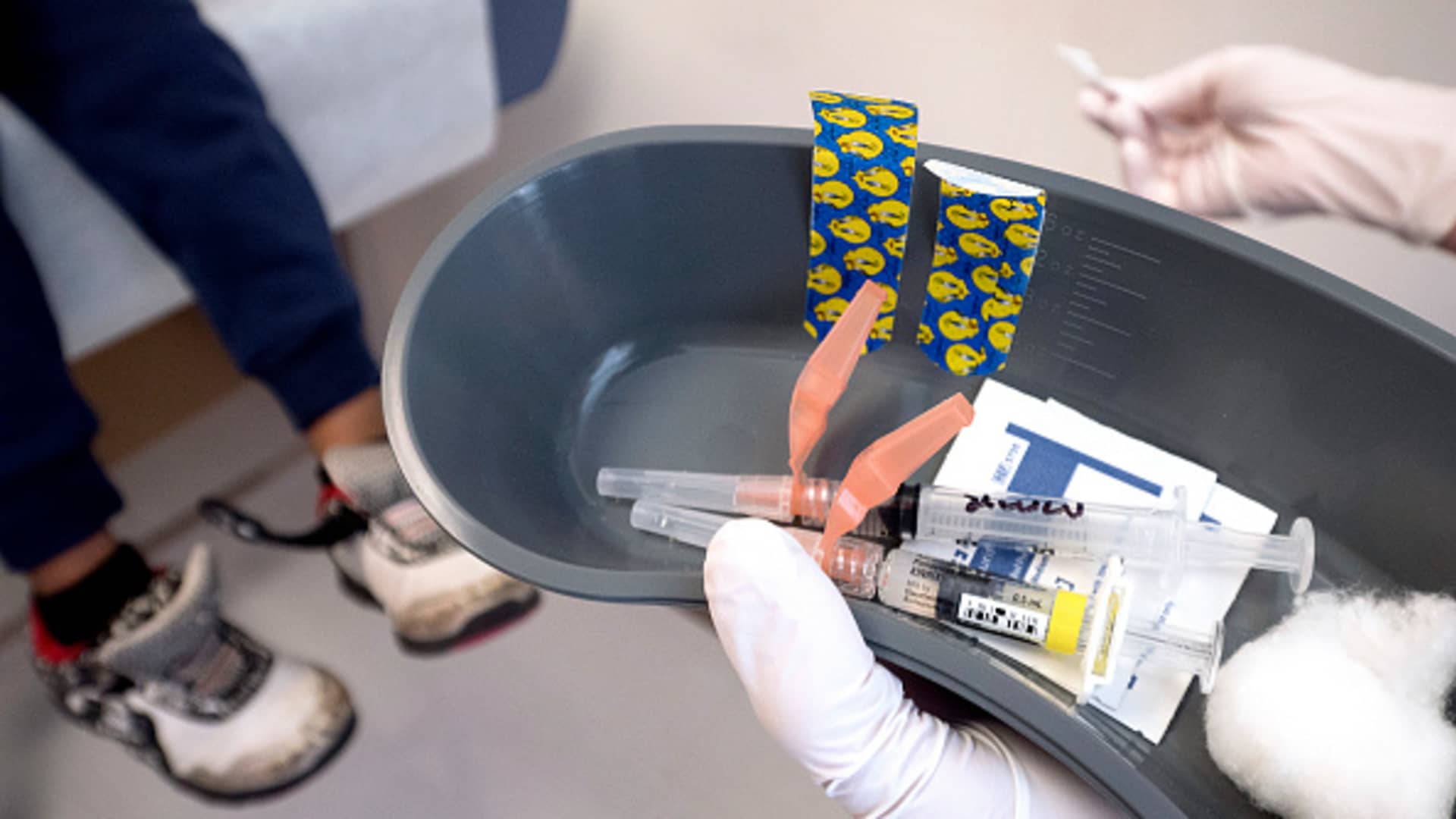Childhood polio vaccination rate is dangerously low in some New York communities, increasing the risk of an outbreak


The childhood polio vaccination rate is as low as 37% in some communities in the New York City metro area, despite a vaccine mandate, increasing the risk of an outbreak as the virus circulates locally for the first time in decades.
Polio vaccination is mandatory in New York for all kids attending day care and K-12 schools, regardless of whether they are public, private or have a religious affiliation.
There are no exemptions to New York state’s vaccine mandate for reasons of religion or personal belief. Exemptions are only provided when a child truly has a medical condition that would prevent the child from receiving a vaccine.
Despite this mandate, the childhood vaccination rate against polio has dropped in some communities. In Rockland County, a New York City suburban area, the vaccination rate for children under age 2 dropped from 67% in 2020 to about 60% in 2022, according to the Centers for Disease Control and Prevention. In some areas of the county, only 37% of kids in this age group are up to date on their polio vaccine.
Children should receive four doses: one at 2 months, a second at 4 months, a third at 6 through 18 months, and a fourth between 4 and 6 years old, according to the CDC.
Overall, the polio vaccination rate in New York state for 2-year-olds is about 79%, according to health department data. Nearly 93% of children ages 2 and under were vaccinated against polio in the U.S., according to a CDC survey published in October 2021.
But the case of a young adult catching polio in Rockland County this summer set off alarm bells among public health officials. Sewage samples collected since May in Rockland County, Orange County and New York City have tested positive for polio, strongly indicating that the virus has been circulating in communities in the metropolitan area for months.
The case of the Rockland County adult is only the second instance of the virus that causes polio transmitting locally in the U.S. since 1979, according to the CDC. New York State Health Commissioner Dr. Mary Bassett has called the wastewater findings alarming, and the CDC has warned that the virus poses an ongoing risk to people who are not vaccinated.
Every single case of polio represents a public health emergency, according to the CDC.
“This is a wake-up call that we have to fix this problem with our vaccination levels, because I’ve never seen a child on an iron lung and I don’t want to,” said Dr. Adam Ratner, director of pediatric infectious disease at NYU Langone Health.
New York state previously had a religious exemption from its school vaccine mandates, which led to a drop in immunization, according to Ratner. This exemption was abolished in 2019 after declining vaccination rates led to a measles outbreak. But the onset of the Covid pandemic in 2020 caused school closures and disruptions to health-care providers that resulted in a drop in polio vaccine administration, according to the CDC.
“Even once people started going back to the doctor, because a lot of schools were remote, places were not enforcing vaccine mandates. So you’ve got this cohort of kids who may still be under-immunized,” Ratner said.
Ratner said there is only one way to prevent further cases of polio: “Getting vaccinated — that is the solution to this problem.”
The Rockland County Health Department launched a campaign to help close the vaccination gap in late July, but the CDC said not enough doses have been administered to meaningfully increase vaccination coverage in the county.
Two doses of the polio vaccine are at least 90% effective at preventing paralysis from the virus, and three doses are 99% to 100% effective, according to the CDC.
What is polio?
Poliovirus — which can cause the disease called poliomyelitis, or polio — is a devastating, highly contagious virus that struck fear into parents’ hearts before the vaccines became available in the 1950s. More than 35,000 people in the U.S. became disabled from polio every year on average in the late 1940s. There is no cure for polio.
The virus can infect a person’s spinal cord, leading to permanent paralysis of the arms and legs. In some cases, polio is fatal because it paralyzes muscles needed to breathe and swallow. Most people who catch the virus do not develop symptoms, but they can still spread the virus to others and make them sick.
The virus, which lives in the intestines and throat, spreads through what physicians call the fecal-oral route. Young children are at particular risk, from putting hands, toys or other objects contaminated with feces in their mouth. The virus can also spread through respiratory droplets when a person sneezes or coughs, though this is less common, according to the CDC.
A successful vaccination campaign dramatically reduced cases of polio paralysis from more than 15,000 annually in the early 1950s to fewer than 10 in the 1970s. Since 1979, not a single case of polio has originated in the U.S.
“We got to this point in the U.S. with a tremendous amount of effort. It is sad to see us backsliding with this,” Ratner said.
Globally, two of three naturally occurring strains of poliovirus have been eradicated, according to the World Health Organization. But travelers have introduced the virus into the U.S. on occasion, and the strain that is now circulating in the New York City area almost certainly originated abroad.
The strain the Rockland County adult caught is linked to a weakened form of the virus used in the oral polio vaccine. The U.S. stopped using this vaccine more than 20 years ago, which means someone who was vaccinated outside the country introduced the virus into the U.S. The New York wastewater samples are genetically linked to positive sewage samples in Israel and the United Kingdom.
The oral vaccine uses a weakened virus that can still replicate in the human body and in rare instances the strain can revert to a type that attacks the nervous system. When this happens, a person recently immunized with the oral vaccine can infect an unvaccinated individual which can potentially result in paralysis.
“That’s one of the reasons we don’t use the oral polio vaccine, because there is always a risk of transmission, especially to people who are immunocompromised or not vaccinated,” said Dr. Waleed Javaid, a hospital epidemiologist at Mount Sinai in New York City. The oral vaccine is used in some countries because it’s effective, cheap, easy to administer and is normally safe.
The U.S. uses a polio vaccine administered as a series of shots in which the virus strain is inactivated so it cannot replicate, spread or cause disease.
The polio vaccine likely protects people for years after the primary vaccination series, though the exact duration of protection is unknown, according to the CDC. Adults vaccinated as children but who are at higher risk for polio exposure can receive one booster. Javaid said anyone who has concerns, such as people with weak immune systems, should consult their primary care physician and find out whether they’re in a risk category and should receive another dose of the vaccine.
But there’s no reason for the general public to panic, Javaid said. Most people are vaccinated and protected against polio. And for those who aren’t, the solution is simple — get vaccinated.
This post has been syndicated from a third-party source. View the original article here.


